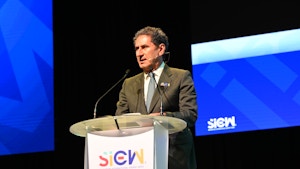 Eco-Business
Eco-Business
Edition
Southeast Asia's Clean Energy Transition
All our latest stories. Back to Sea's Clean Energy Transition.

As the island recovers from a pandemic-induced slump, it is trying to diversify its economy beyond tourism and attract green business. But can eco-startups scale or is Bali more beach than business?

Several commitments have been made in 2023 to boost clean energy in the region, and observers are now looking for signs of real action. Meanwhile, solar manufacturers could be in for a bumpy ride.

SDG 12. Consumption
Petronas, Pertamina among national oil companies at highest risk of not generating public returns in net-zero world
A new analysis lists the Malaysian and Indonesian oil firms as two of the world’s four state-owned oil companies which will face the highest costs for continued oil expansion. Falling demand of the dirty fuel could impact their national economies.

Meet the people pushing to protect one of the most vulnerable parts of the world to global warming at the COP28 climate talks in Dubai.

SDG 13. Climate
Fast-growing Johor eyes Singapore power trade, electric vehicle opportunities in green economy drive
Malaysia’s southernmost state is exploring clean power exports and boosting EV infrastructure development via a proposed special economic zone with Singapore. Johor's green economy plan will also look to bolster flood defences.

SDG 13. Climate
High renewables development costs are a ‘symptom’ of inflexible power grids: IRENA chief
Having more energy storage facilities can help shake Southeast Asia's reliance on fossil fuels, said the head of the intergovernmental body championing the use of renewables in a sit-down with Eco-Business.

SDG 13. Climate
Singapore’s central bank proposes engagement, over divestment, for decarbonising finance firms
While experts have lauded the regulator’s transition planning guidelines as one of the most comprehensive for the sector thus far, some said it remains unclear when divestment could be a valid and sound step to take.

The city-state has given initial clearance for firms to bring in over 4 GW of low-carbon electricity from its neighbours. Regulators are studying if Singapore can take in more power imports, with several consortiums indicating interest.

SDG 9. Infrastructure
Support for fossil fuel subsidy cuts and coal phase-out gains momentum among Southeast Asians: survey
At least half of respondents want these subsidies to stop, reflecting a likely attitude shift as such cuts were seen as the least popular intervention previously. Most are still worried that the renewables push will hike up energy prices.

The pandemic shone a spotlight on the medical waste generated by stretched hospitals. The healthcare sector's decarbonisation efforts continue to be hampered by cost, habits and a lack of data.

The government is also pledging US$430 million for “marginally bankable” energy transition projects and accelerating the launch of a renewable energy exchange for cross-border trade, both part of its new energy transition roadmap.

SDG 13. Climate
Corporate governance structures in Asia: Does where the sustainability function sits affect a company’s climate strategy?
Most corporate sustainability functions in Asia evolved out of the communications department. Does that imply that sustainability is more about image than action? Where should a sustainability leader sit to drive real change?


Transforming Innovation for Sustainability Join the Ecosystem →







